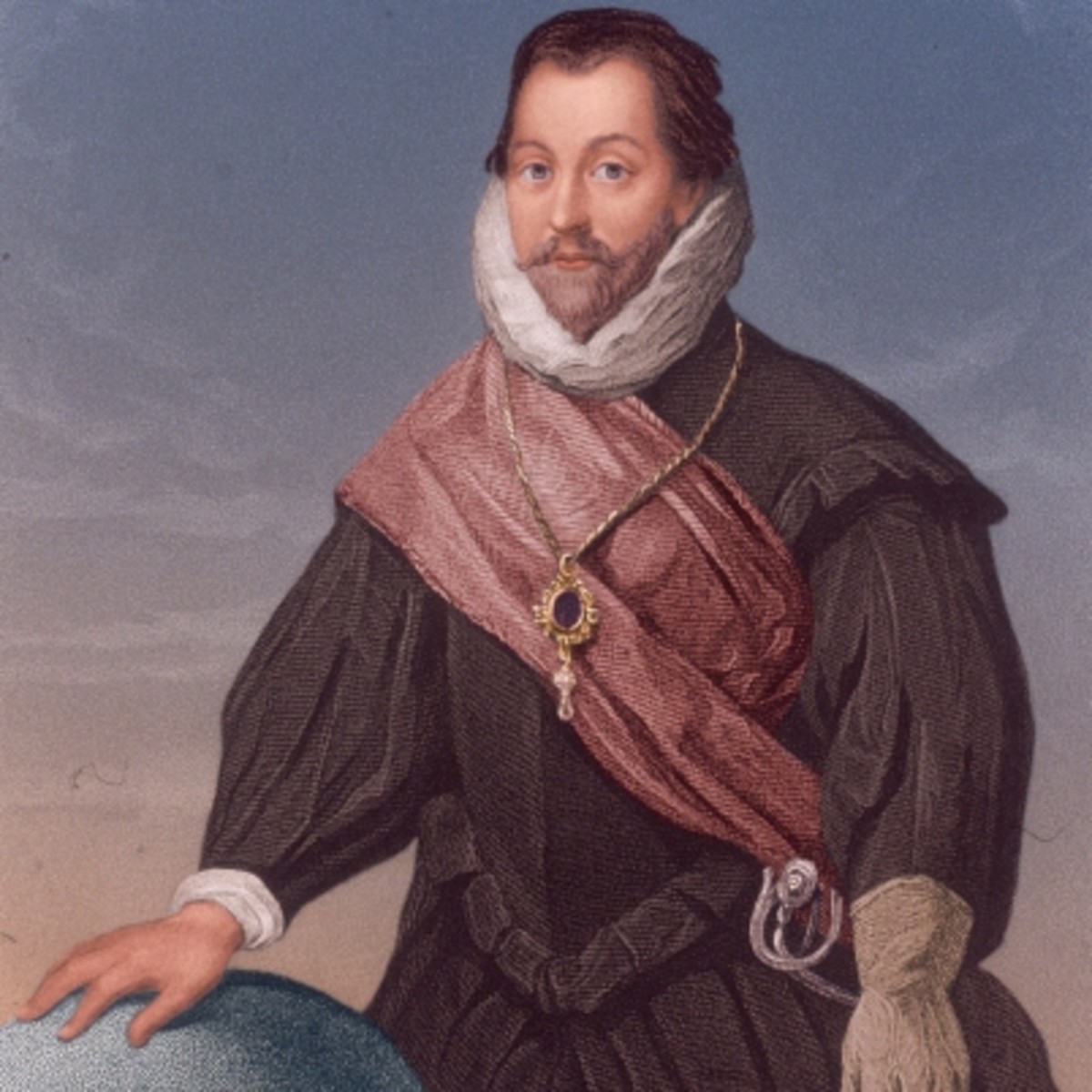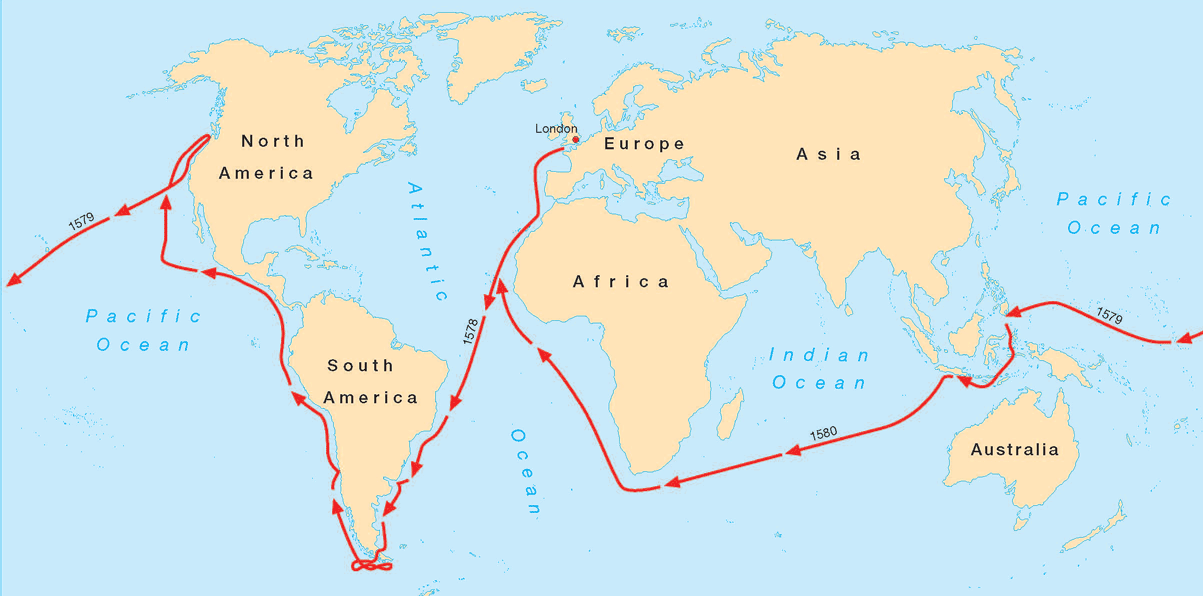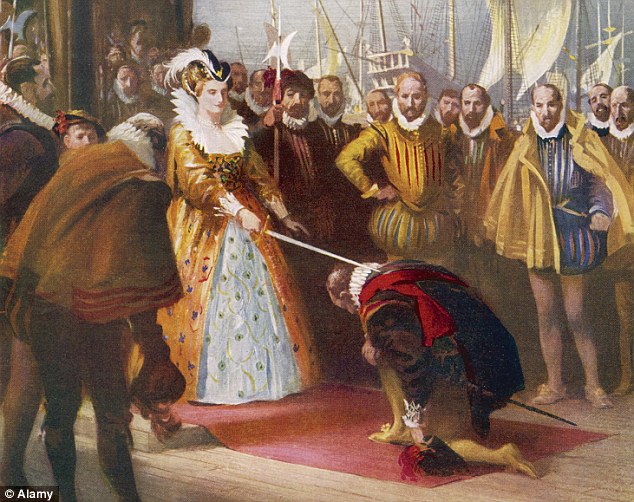
On this day exactly 440 years ago, an English nobleman named Francis Drake left on a mission that would take him three years and would win him a knighthood by Queen Elizabeth I of England. (I’m not entirely sure that people “win” those, but you know what I mean.) Now, Sir Francis Drake wasn’t always the historical explorer and hero we know him as today. Before he was chosen for the expedition that would win him his lordship, Drake was a pirate and slave trader. Woah!
Francis Drake was born in 1540 in Tavistock (that is NOT lost on us), Devon, England. He was the eldest of twelve sons, born to a farmer in Devon. Not much is known about his early life, as is pretty expected of someone living at that time. In 1549 the Drake family moved to Kent due to religious persecution, and Edmund Drake apprenticed his eldest son out to a neighbor – a captain of a large sailboat. This was Francis’ first introduction to the sea – and the neighbor was so pleased with Drake’s attitude and abilities that, being without children of his own, he gave the barque (a sailing vessel with three or more masts) to Drake when he died. Drake spent his twenties sailing to and from the Americas with his second cousin John Hawkins – the first known English slave trader.
 After a few adventures with his cousin, Drake spent much of the early 1570s living along the “Spanish Main” or the Panama Isthmus, attacking Spanish vessels and small settlements. During this time, fun fact, Drake climbed a tree on the Isthmus of Panama and looked out over the Pacific – being the first Englishman to ever behold the Pacific Ocean. Drake and his men eventually made it back to Plymouth, England, having captured much in Peruvian gold but having been forced to bury it along the way to avoid its recapture by the Spanish.
After a few adventures with his cousin, Drake spent much of the early 1570s living along the “Spanish Main” or the Panama Isthmus, attacking Spanish vessels and small settlements. During this time, fun fact, Drake climbed a tree on the Isthmus of Panama and looked out over the Pacific – being the first Englishman to ever behold the Pacific Ocean. Drake and his men eventually made it back to Plymouth, England, having captured much in Peruvian gold but having been forced to bury it along the way to avoid its recapture by the Spanish.
 In 1577, Elizabeth I sent Drake (because of his “success” with the Isthmus raids) on an expedition to sail along the Pacific coast of the Americas. After one false start due to bad weather, the crew set final sail on the 13th of December, 1577. Drake set out with five ships (which soon became 6) and 164 men. The crew made it around Cape Horn, and went alongside the coast of South America pillaging and looting Spanish towns and ships along the way. Drake restocked and rested his ships on the Coast of California for a time, and then continued on to the Molucca islands in what is now known as Indonesia. Eventually Drake rounded the Cape of Good Hope – the southernmost tip in Africa, and made his way back to Plymouth, having circumnavigated the globe and made it around two of the most treacherous sailing spots in the world (both Capes) in just under three years.
In 1577, Elizabeth I sent Drake (because of his “success” with the Isthmus raids) on an expedition to sail along the Pacific coast of the Americas. After one false start due to bad weather, the crew set final sail on the 13th of December, 1577. Drake set out with five ships (which soon became 6) and 164 men. The crew made it around Cape Horn, and went alongside the coast of South America pillaging and looting Spanish towns and ships along the way. Drake restocked and rested his ships on the Coast of California for a time, and then continued on to the Molucca islands in what is now known as Indonesia. Eventually Drake rounded the Cape of Good Hope – the southernmost tip in Africa, and made his way back to Plymouth, having circumnavigated the globe and made it around two of the most treacherous sailing spots in the world (both Capes) in just under three years.
Upon Drake’s return to Plymouth, the half share of his pillaged cargo that was to be Queen Elizabeth’s actually exceeded all the other income the crown had that entire year. Hence the knighthood.

Drake became an active political member of the British aristocracy, being a member of Parliament on three occasions and even mayor of the coastal town of Plymouth from where he set sail. Drake led further attacks against the Spanish under the Queen’s command in the mid-1580s, and in 1588 he was vice-admiral to the English fleet that destroyed the Spanish Armada in a nightly attack. In 1596, on a voyage to capture San Juan (Puerto Rico), Drake failed to take the city, and after suffering terrible blows to his ship and crew, came down with dysentery and passed away onboard. Just goes to show you… doesn’t matter who you are you are still subject to the same perils that the lowest members of your crew are subject to! In any case, Drake is still remembered today for his bravery, amazing sea-faring abilities, and indefatigable hatred of the Spanish.
Just kidding!

